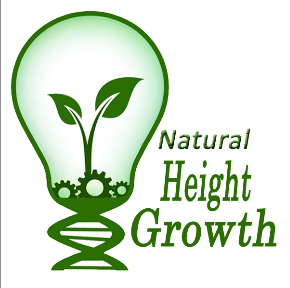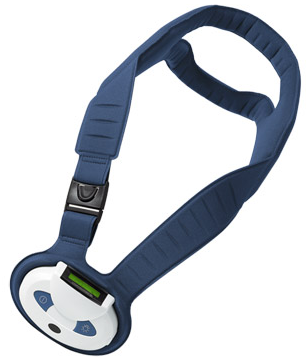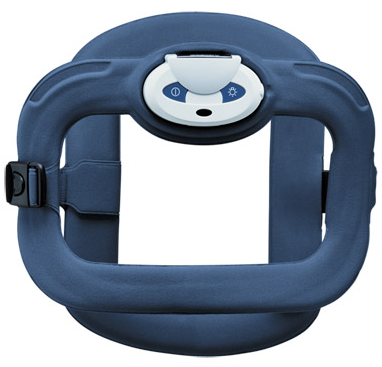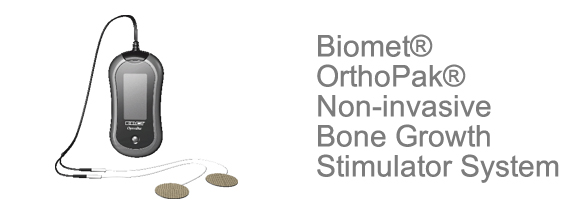Device, Techniques & Patents
Apparatus and method for invasive electrical stimulation of bone fractures – Eddie Adams (4602638)
Overview: An invasive electrical stimulation device includes a cathode an anode, each comprising a thin electrically conductive sheet having one exposed surface and the opposite surface covered with an insulation layer. A pair of insulated leads connect the cathode and anode to an implantable power pac which includes a source of electric power and an insulating encasement surrounding the same. The cathode may be equipped with a plurality of spaced-apart FM channel monitors which are electrically connected to an FM telemetry component within the power pac for transmitting signals indicative of the healing response of a fracture to electrical stimulation. A frequency modulated current regulator may be added to the power pac for adjusting the amperage in response to FM control signals from a remote transmitter or automatically by an implantable computer assisted device.
Automatic lengthening bone fixation device – Behrooz Akbarnia, et. al. (EP2244644 A1)
Overview: A bone fixation device adapted to be coupled to bone anchors that allows movement of rods to permit a screw-rod construct to lengthen in response to bone growth without necessitating post surgical installation adjustment of the device. The bone fixation device includes a locking mechanism that is operably associated with a housing to allow relative movement of a rod and a housing in a first direction and inhibiting relative movement of the rod and the housing in a second direction.
Bone and tissue lengthening device – R. Alan Spievack (EP0684793 B1)
Overview: A device for lengthening bone in a human or animal by incrementally extending the distance between discrete separated portions of the bone to permit continued bone growth between the separated portions comprising an intramedullary nail (4) having distal (6) and proximal (8) portions both of which are secured with the medullar canal of the bone. A hydraulic cylinder (2) comprises the proximal portion of the nail and a piston (9) comprises the distal portion of the nail. An implantable supply of operating fluid (30) communicates with the cylinder. A ratcheting mechanism (40), between the piston and cylinder, limits their relative movement. A shock absorber mechanism (52) permits limited lost motion between the piston and cylinder and ratcheting release mechanisms are employed to permit the piston and cylinder to reverse directions.
Combined tissue/bone growth stimulator and external fixation device – John C. Tepper, Richard M. Bryant (6678562)
Overview: A combined tissue/bone growth stimulator and external fixation device is provided to aid in the treatment of fractures, osteotomies, soft tissue injuries, and reconstructive surgery and to reduce the likelihood of complications. The tissue/bone growth stimulator apparatus includes an external fixation device for stabilization of a selected portion of a patient. The tissue/bone growth stimulator apparatus also includes an electrical circuit attached to and forming an integral component of the external fixation device and operable to generate an electrical drive signal. The tissue/bone growth stimulator apparatus also includes a cable adapted to connect the electrical drive signal to a stimulator portion operable to provide an electromagnetic field to stimulate the growth of bone and tissue at the selected portion of the patient and/or at other portions of the patient. More particularly, the electromagnetic field may be produced by directing a current through the external fixation…
Compact biomedical pulsed signal generator for bone tissue stimulation – James W. Kronberg (5217009)
Overview: An apparatus for stimulating bone tissue for stimulating bone growth or treating osteoporosis by applying directly to the skin of the patient an alternating current electrical signal comprising wave forms known to simulate the piezoelectric constituents in bone. The apparatus may, by moving a switch, stimulate bone growth or treat osteoporosis, as desired. Based on low-power CMOS technology and enclosed in a moisture-resistant case shaped to fit comfortably, two astable multivibrators produce the desired waveforms. The amplitude, pulse width and pulse frequency, and the subpulse width and subpulse frequency of the waveforms are adjustable. The apparatus, preferably powered by a standard 9-volt battery, includes signal amplitude sensors and warning signals indicate an output is being produced and the battery needs to be replaced.
Composition for increasing body height – Nakao, Kazuwa (EP1743653 A1)
Overview: This invention provides a composition for increasing a body height of a patient with short stature or an individual other than patients with short stature. More specifically, the invention provides: a composition for increasing the body height of an individual comprising a guanyl cyclase B (GC-B) activator as an active ingredient, the composition being to be administered to an individual free from FGFR3 abnormality; a method for increasing the body height of an individual free from FGFR3 abnormality which comprises activating GC-B; a method for screening an agent for increasing the body height of an individual which comprises selecting an agent for increasing the body height using GC-B activity as an indication; and a method for extending a cartilage bone free from FGFR3 abnormality which comprises activating GC-B in an individual.
Device for treating osteoporosis, hip and spine fractures and fusions with electric fields – Carl T. Brighton et al. (7158835)
Overview: A technique and device for preventing and/or treating osteoporosis, hip and spine fractures, and/or spine fusions by incorporating at least one conductive coil (110) into a garment (90) adapted to be worn adjacent to the patient’s skin over a treatment area and applying an electrical signal to the coil effective to produce a magnetic flux the penetrates the treatment area so as to produce an electric field in the bones and the treatment area.
Electrical stimulation of articular chondrocytes – Carl T. Brighton (4487834)
Overview: Cell development in articular chondrocytes is enhanced by subjecting them to an alternating current field having a frequency of about 60/khz and a current density in the order of 30-40 .mu.amps/cm.sup.2
External bone fixation device – Bruce Henry Ide, Anthony Philip Pohl (EP0566561 A1)
Overview: This invention relates to external bone fixation devices used in the treatment of bone fractures and more specifically to a unilateral bone fixation device suitable for use in carrying out bone transport procedures and also bone lengthening procedures.
Human growth gene and short stature gene region. Therapeutic uses – Dr. Ercole Rao (EP1260228 A3)
Overview: Subject of the present invention is an isolated human nucleic acid molecule encoding polypeptides containing a homeobox domain of sixty amino acids having the amino acid sequence of SEQ ID NO: 1 and having regulating activity on human growth.
Three novel genes residing within the about 500kb short stature critical region on the X and Y chromosome were identified. At least one of these genes is responsible for the short stature phenotype. The cDNA corresponding to this gene may be used in diagnostic tools, and to further characterize the molecular basis for the short stature-phenotype. In addition, the identification of the gene product of the gene provides new means and methods for the development of superior therapies for short stature
Human growth hormone for treating children with abnormal short stature and kits and methods for diagnosing gs protein dysfunctions – Francis De Zegher (EP1370281 A2)
Overview: The present invention presents the use of human Growth Hormone for the manufacture of a medicament for the treatment of abnormal short stature, said short stature being characterized by a Gs protein pathway dysfunction. The invention further presents diagnostic methods and diagnostic kits for the determination of Gs pathway dysfunction.
Hyaluronan used in improvement of anti-oxidation and proliferation in chondrocytes – Huan-Ching Hsu et al (US 2008/0051367 A1)
Overview: The present invention relates to the use of hyaluronan in protecting chondrocytes against oxidative damages and further promoting their proliferation. Particularly, the present invention relates to the use of hyaluronan with a molecular weight of 600,000-1,200,000 Dalton in protecting chondrocytes against reactive oxygen damages and further promoting their proliferation.
Implantable bone growth stimulator – Carl T. Brighton (4549547)
Overview: Disclosed is an implantable bone growth stimulator which needs no internal battery or large buffer capacitor. A receiving coil in a preferred embodiment, a ferrite core coil, receives RF energy from a transmitter external to the patient. The received RF energy is voltage doubled and rectified and provided to a constant current generator which in turn supplies a constant amount of current between implanted cathodes and an implanted anode. In preferred embodiments, the receiving coil, power supply, and cathodes are one unit which is located in place on an internal fixation device attached to the bones near the fracture site. In another embodiment, only the cathodes are located in the vicinity of the fracture site and the receiver coil voltage multiplier circuit and constant current source are located remote from the fracture site. Additionally, the internal fixation device in a preferred embodiment may have a plastic insert therein having one or more holes therethrough for the…
Implantable bone growth stimulator and method of operation – John H. Erickson, et. al (5441527)
Overview: A method for the therapeutic stimulation of bone growth of a bone site is disclosed comprising the steps of implanting first and second electrodes into the tissue near the base site. The electrodes are coupled to a bone growth stimulator which generates an alternating current.
Implantable bone-lengthening device – James McCarthy (Publication number:US 2005/0234448 A1)
Overview: The invention relates to implantable bone-lengthening devices that are not placed intra-medullarily, but are placed extramedullarily, i.e., outside of the bones, but under the skin. The devices do not require exposed hardware (that leads to infection) or skin and muscle penetration from the pins (that cause pain), and produce minimal scarring from pin sites because the devices are placed under the skin of a patient using minimally invasive techniques. The devices may be designed with smooth contours to enable implantation using minimally invasive techniques. The devices may be actuated using an actuator that is externally or internally powered. In the case of external power, the devices may be powered remotely through high frequency transmission of power through the skin. Also included are bone-lengthening devices having fluid reservoirs and conduits for storing and delivering therapeutic fluids to treatment sites.
Increasing bone fracture resistance by repeated application of low magnitude forces resembling trauma forces – Gary S. Beaupre, Dennis R. Carter, Wilson C. Hayes (5752925)
Overview: The invention presents a method and device for increasing the fracture resistance of a bone tissue to a traumatic force. The method includes the step of selecting a nonphysiological impulse force having a location and direction resembling that of the traumatic force, but having a magnitude significantly smaller than the magnitude of the traumatic force. The impulse force is then repeatedly applied to the bone tissue, thereby stimulating the bone tissue to grow bone mass in critical areas where stresses from the traumatic force are largest. A device for applying the method includes an impulse force applicator for repeatedly applying the impulse force and a positioner for positioning the impulse force relative to the bone tissue.
Method and apparatus for cartilage growth stimulation – Roger J. Talish et al (Patent number: 7108663)
Overview: The invention relates to apparatus and method for ultrasonically stimulating cartilage growth. The apparatus includes at least one ergonomically constructed ultrasonic transducer configured to cooperate with a placement module or strip for placement in proximity to an area where cartilage growth is desired. The apparatus also utilizes a portable, ergonomically constructed main operating unit constructed to fit within a pouch worn by the patient. In operation, at least one ultrasonic transducer positioned in proximity to an osteochondral site is excited for a predetermined period of time. To ensure that at least one ultrasonic transducer is properly positioned, and to insure compliance with a treatment protocol, a safety interlock is provided to prevent inadvertent excitation of the at least one ultrasonic transducer.
Method and apparatus for controlling the growth of cartilage – Abraham R. Liboff, Bruce R. McLeod, Stephen D. Smith (Patent number: 5067940)
Overview: An apparatus and method for regulating the growth of cartilage in vivo are provided. The apparatus includes a magnetic field generator and a magnetic field detector for producing a controlled, fluctuating, directionally oriented magnetic field parallel to a predetermined axis projecting through the target tissue. The field detector samples the magnetic flux density along the predetermined axis and provides a signal to a microprocessor which determines the average value of the flux density. The applied magnetic field is oscillated at predetermined frequencies to maintain a preselected ratio of frequency to average flux density. This ratio is maintained by adjusting the frequency of the fluctuating magnetic field and/or by adjusting the intensity of the applied magnetic field as the composite magnetic flux density changes in response to changes in the local magnetic field to which the target tissue is subjected. By maintaining these precise predetermined ratios of frequency to average…
Method for non-invasive electrical stimulation of epiphyseal plate growth – Carl T. Brighton
Overview: Epiphyseal growth plate stimulation in the bone of a living body is achieved by applying electrodes non-invasively to a body and supplying to said electrodes an AC signal in the range of about 2.5 to 15 volts peak-to-peak at a frequency of about 20-100 KHz.
Method for the promotion of growth, ingrowth and healing of bone tissue and the prevention of osteopenia by mechanical loading of the bone tissue – Kenneth J. McLeod, Clinton T. Rubin (5103806)
Overview: A method for preventing osteopenia, promoting bone tissue growth, ingrowth, and healing of bone tissue includes the step of applying a mechanical load to the bone tissue at a relatively low level on the order of between about 50 and about 500 microstrain, peak-to-peak, and at a relatively high frequency in the range of about 10 and about 50 hertz. Mechanical loading at such strain levels and such frequencies has been found to prevent bone loss and enhance new bone formation.
Method for treating cartilage related diseases – Kai Yu et al (Patent number: 6713513)
Overview: The present invention relates to a method for preventing or treating of cartilage related diseases, such as osteoarthritis, rheumatoid arthritis, articular cartilage damage, multiple chondritis, osteochondrosis, etc., which comprises administering an effective amount of calcium L-threonate to a subject in need of such prevention or treatment. It had been demonstrated by experiments that calcium L-threonate could improve significantly the positive expression percentage of collagen I mRNA in the chondrocyte and osteoblast, improved significantly the positive expression percentage of articular cartilage and epiphyseal cartilage, facilitated the growth of chondrocyte, increased the quantity of bone collagen, and promoted the formation of bone and cartilage matrix and the synthesis of proteoglycan. It could also promote the formation of bone nourishing blood vessels and improve the microcirculation of bone.
Overview: Bone fractures previously considered incurable are healed non-invasively by applying to electrodes coupled to the skin of a living body in the vicinity of a bone fracture an alternating voltage having a wave form that is symmetrical with respect to the axis, a frequency in the range 20-100 KHz and a value in the range from about 2 to 10 volts peak to peak.
 Finally, Finally, I have managed to get the 1st podcast up. It should only get easier from here since they always say that for almost everything, the first time is always the hardest, when it comes to learning any new skill or activity. For me this process of putting up a podcast series for this website has been a huge learning experience dealing with all types of challenges including learning about new hardware considerations, software issues, buying new services, and many other things.
Finally, Finally, I have managed to get the 1st podcast up. It should only get easier from here since they always say that for almost everything, the first time is always the hardest, when it comes to learning any new skill or activity. For me this process of putting up a podcast series for this website has been a huge learning experience dealing with all types of challenges including learning about new hardware considerations, software issues, buying new services, and many other things.


